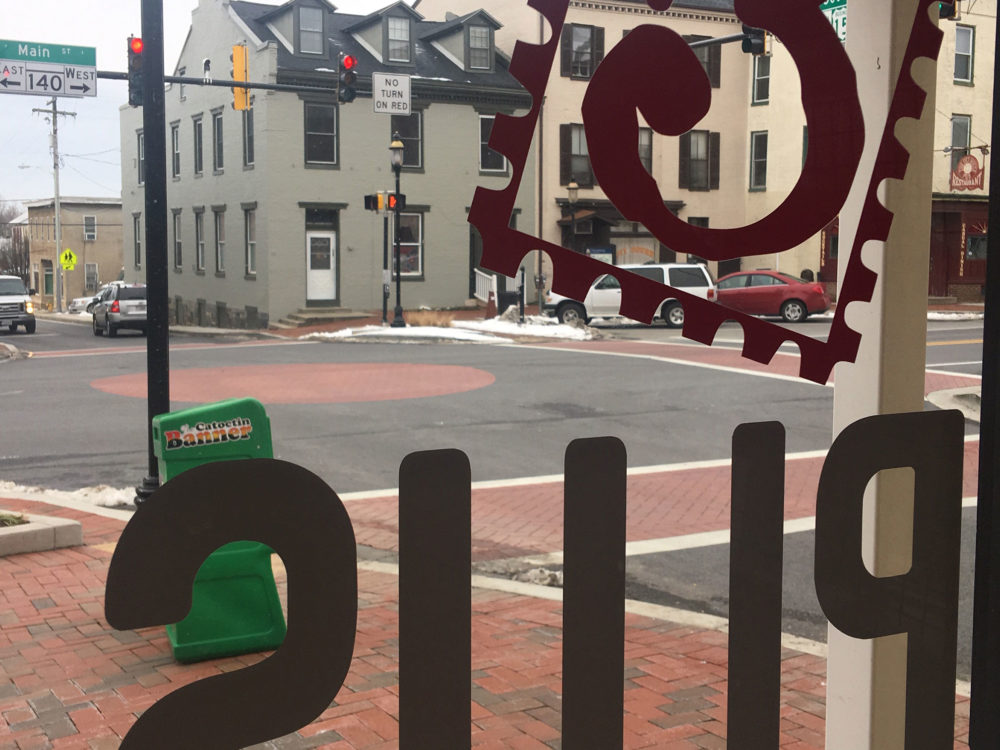James Rada, Jr.

The Emmitsburg Commissioners began a review of proposed changes to the town’s sign ordinance. The ordinance is undergoing major re-work, and the review will take place over three meetings. The next two town meetings this month, as well as in April, will be when the discussion is continued. The public is encouraged to let the commissioners know their opinions about the proposed changes so that their input can be taken into consideration.
The changes are needed in order to update the ordinance to deal with new technology and to comply with recent state and federal legal cases involving signage. Town Planner Zach Gulden told the commissioners that in one case the U.S. Supreme Court ruled that sign ordinances needed to be “content neutral.”
“If your code enforcement officer has to read the sign in order to determine whether a regulation applies, the ordinance provision will likely be subject to a challenge,” he said. He also pointed out that the current town sign ordinance might possibly fail that test because it treats civic and nonprofit signage differently than commercial signage.
One change suggested is to move the sign ordinance from its current location in the town code into the zoning ordinance.
“This will allow the Planning Commission to review and comment on the proposed amendment, and it will allow businesses and residents the opportunity to apply for zoning variances if the property has a unique hardship not recognized by the sign code,” Gulden said.
This first session looked at the proposed types of signs that would be allowed and prohibited. These changes and other proposed changes are based on other sign ordinances around the state.
Sign types such as abandoned signs were obvious choices for prohibited signs. Other types, such as reflective and animated signs, were included because they can lead to distracted driving.
Prohibiting neon signs raised concern among the commissioners. “That one’s just jumping out at me,” said Commissioner Joseph Ritz, III.
Gulden said that whether or not to include neon signs was up to the commissioners, but he pointed out that buildings with neon signage are not eligible for Community Legacy Grants.
Signs that would be allowed under the proposed ordinance include traffic signs, holiday/seasonal decorations, personal expression signs, security signs, flags, arts and murals, legal notices, and temporary signs.
During a February Town meeting, owners of three local businesses (Emmitsburg Tattoo, The Ott House, and Total Look Hair Salon) spoke to express how restrictions on signage would affect their businesses.
Town Manager Cathy Willets told the commissioners that she feels they will find that the changes, taken as a whole, are far less restrictive than the current sign ordinance.
No actions were taken on the proposed changes during the February meeting. The review of the changes continues during the March 4 and April 1 meetings of the town commissioners. Residents and business owners are invited to voice their opinions about the changes at these meetings.
“We’re really going to dig deep into the details in the next two meetings,” Gulden said.
Even if existing legal signage does not comply with whatever the town commissioners eventually pass, the existing signage will be grandfathered in and allowed to continue unchanged.
Emmitsburg Commissioners are conducting a sign ordinance review to deal with new technology and to comply with recent state and federal legal cases involving signage.

